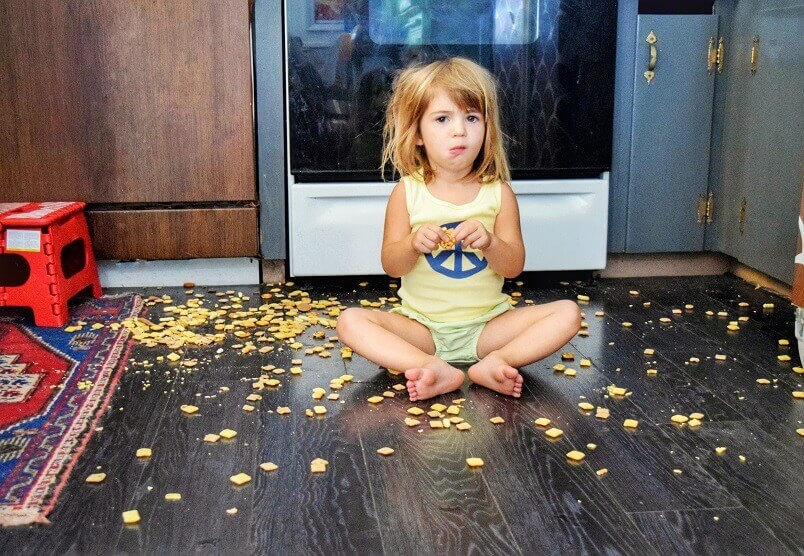If you’re the parent of a baby, it won’t be long before that baby morphs into a toddler. Then you’ll have a whole new set of worries as that little person becomes mobile—and dangerous. If you’ve been through this transition before, you know what I mean. Every parent is thrilled when that tiny helpless being grows big enough to start crawling, then pulling himself or herself up to a standing position, then (gulp) walking—or more accurately, toddling—about. However, that thrill is accompanied by a sense of dread, as you realize how much more trouble they can get into at each new stage.
Stay one step ahead, even if they’re not walking yet!
As your child goes through each of these stages, your job as the parent is to be one step ahead of them, ensuring the house is safe throughout. And the best way to do this is to think like a toddler, meaning to get out of your grownup brain and to see the world and all of its many temptations through the eyes of a little one who simply does not know any better.
We really got to thinking about this while researching safety during earthquakes, which includes making sure heavy objects would not fall. While researching that information, we came across a video showing how easily a toddler can pull a television over and end up being crushed by it. The video is graphic, and even though it uses a dummy for this demonstration, it’s unsettling to watch.
According to the U.S. Consumer Product Safety Commission, the organization that posted this video, a child dies every two weeks because a TV, appliance or piece of furniture falls on him or her. And that’s only one of the types of dangers we as parents can easily eliminate during the toddler years.
Toddlers will find every little danger they can
Curiosity is one reason these little toddlers are so at risk. They are doing what comes naturally—exploring their worlds—and the more mobile they become, the bigger their worlds and the more they have to explore. Yet all the dangers that exist aren’t immediately obvious to us because we are at one height and seeing things through our eyes, while they are down there at the floor level seeing enticing temptations we’d never even imagine exist.
What to do? Thoroughly go through your house and make sure all dangers are eliminated. Get on your hands and knees if necessary, to see what they see. Use checklists put together by experts to overcome your “grownup” bias that prevents you from seeing risks through a toddler’s eyes. For example, at KidsHealth.org, you’ll find checklists for different areas of your home, inside and out:
- The kitchen
- Bedrooms, both theirs and yours
- Walls, floors, rugs, doors and windows, stairways
- Electrical
- Bathroom, garage, laundry room
- Outside areas, backyard, pool
Consider going through each of them to discover the less-than-obvious hazards, such as the rubber tips on doorstops that are easily pulled off by chubby fingers and slipped into a toddler mouth faster than you can say, “Wait!” Or the rug that’s likely to trip clumsy feet and send a toddler crashing into the corner of the coffee table.
Toddlers lack the self control that keeps them safe
We all try to teach our kids right from wrong from the start, to be clear on what’s okay (petting the cat nicely) to what’s not (yanking the cat’s tail), but until a child is 4 or 5 years old, the ability to have the kind of self control that will keep them out of trouble is lacking. That means it doesn’t matter how many times you tell them not to stick something into the electrical outlet because the lesson probably won’t stick until they reach that magic age when they finally have willpower.
Until then, it’s our job to keep them safe—so they’ll reach that age…and then some, until we get a whole new set of worries! Like school! Then driving! Then dating! Then…!

